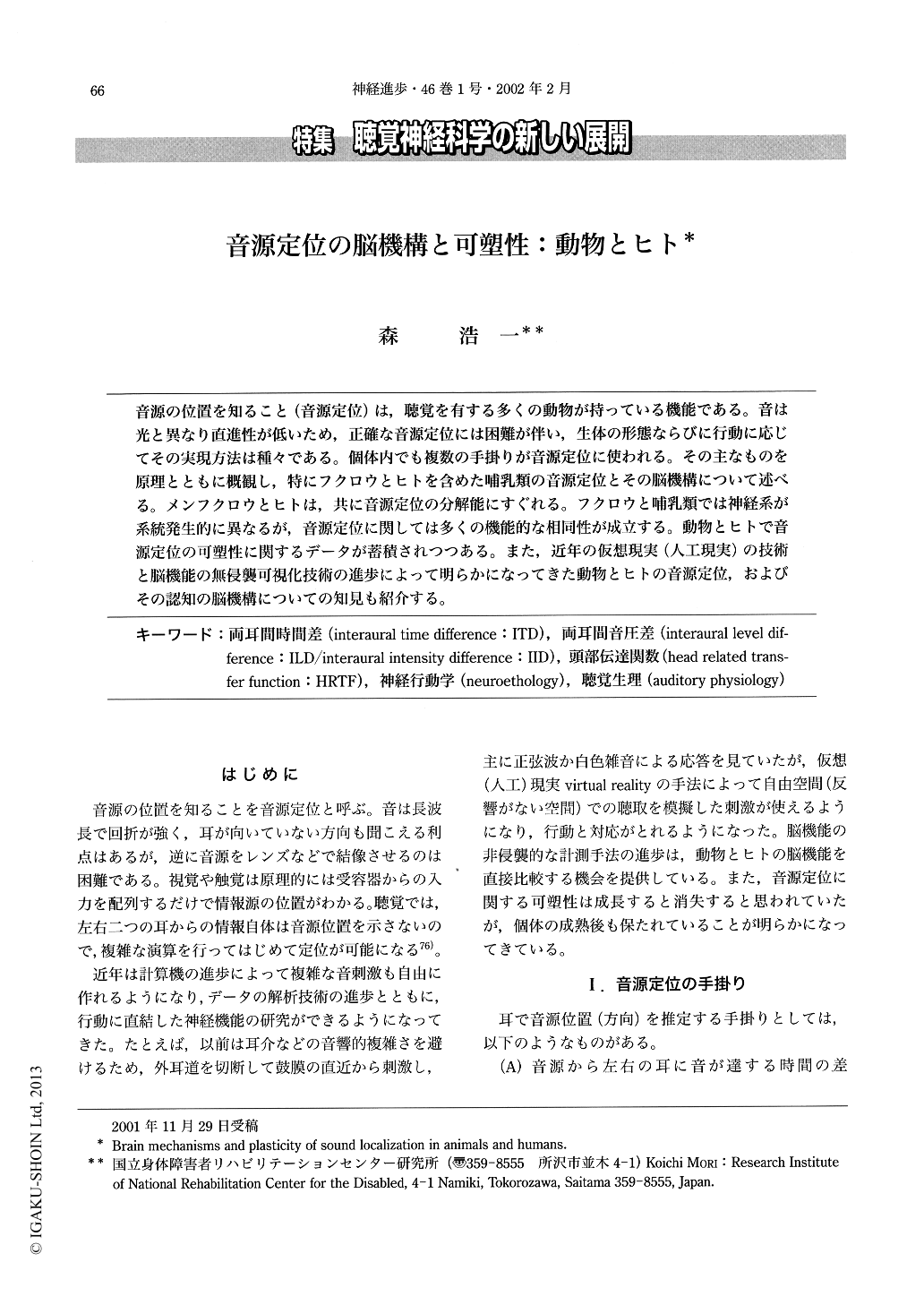Japanese
English
- 有料閲覧
- Abstract 文献概要
- 1ページ目 Look Inside
音源の位置を知ること(音源定位)は,聴覚を有する多くの動物が持っている機能である。音は光と異なり直進性が低いため,正確な音源定位には困難が伴い,生体の形態ならびに行動に応じてその実現方法は種々である。個体内でも複数の手掛りが音源定位に使われる。その主なものを原理とともに概観し,特にフクロウとヒトを含めた哺乳類の音源定位とその脳機構について述べる。メンフクロウとヒトは,共に音源定位の分解能にすぐれる。フクロウと哺乳類では神経系が系統発生的に異なるが,音源定位に関しては多くの機能的な相同性が成立する。動物とヒトで音源定位の可塑性に関するデータが蓄積されつつある。また,近年の仮想現実(人工現実)の技術と脳機能の無侵襲可視化技術の進歩によって明らかになってきた動物とヒトの音源定位,およびその認知の脳機構についての知見も紹介する。
Any animal that can hear has sound localization ability to a certain extent. However, due to the diffractive nature of sound, unlike light, localization by sound can be very difficult. The ways sound sources are localized are varied from species to species depending on the biological features and ethological conditions. Even within a species, several cues could be used. Here the principal mechanisms of sound localization and typical examples in animals and humans are described. In particular, the brain mechanisms for sound localization in the owl and mammals, including humans, are reviewed.

Copyright © 2002, Igaku-Shoin Ltd. All rights reserved.


